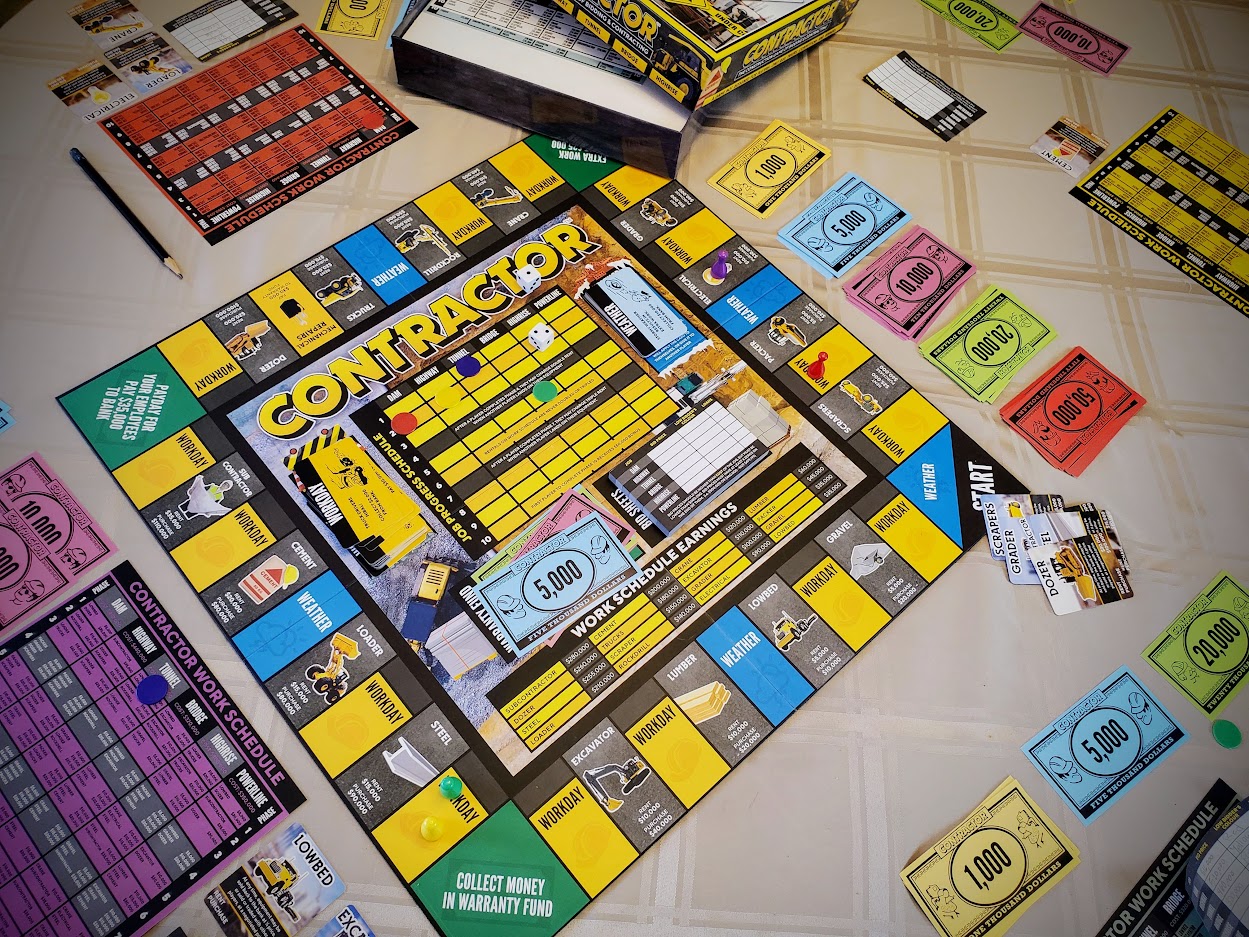

CONTRACTOR is a board game designed for 2-6 players that simulates the ups and downs of a real-life contractor. Players roll dice to move around the board, pay employees, collect warranty funds, deal with weather, enjoy productive workdays, progress on jobs, and get paid.
Just like real-life contractors, player strategies and money management improve with every play session. But like any game, the way it plays changes with the number of players.
In this article, we’ll talk about how many players can play Contractor, how the rules differ for 2 players, and how the game plays with low numbers.
CONTRACTOR can be played with 2-6 players, and it works well with every number of players. There are differences in gameplay and strategy, however, with different numbers of players. To read tips and strategies for 3-6 players, watch the Blog page for updates! Read on for a description of how bidding works in a 2-player game, then we’ll consider some strategies.
At the beginning of a game of CONTRACTOR, players bid on the available jobs: dam, highway, tunnel, bridge, highrise, and powerline. When there are more players, bidding occurs for all six jobs, so the play is unique in a 2-player game. With 2 players, bidding only occurs on the first four jobs. The instruction manual explains the process like this:
“Each player secretly writes down a bid for the Dam job. Then they expose their bids, and the Dam is awarded to the low bidder, and the Highway is awarded at cost to the other player. Then both players bid on the Tunnel. Bids are exposed, and the Tunnel is awarded to the low bidder, and the Bridge is awarded to the other player at cost. Each player will have two jobs. (With 2 players, only the first four jobs are regarded).”
In a two-player game of CONTRACTOR, direct competition and blocking strategies are more impactful since there are fewer alternatives for job completion and equipment rental. The game’s pacing is faster due to fewer turns per round, providing more opportunities for Workdays. Income and expenses have a different rhythm, with rent income occurring less often and workday expenses more frequently. This requires strategic cash flow management and efficient planning to outmaneuver your opponent and control the market effectively.
Aggressive Bidding: With fewer opponents, you can be more aggressive in your bidding, aiming to monopolize high-reward jobs.
Equipment Dominance: Focus on acquiring a diverse range of equipment quickly. With only one opponent, you can control the market and rent equipment to them more frequently.
Strategic Sabotage: Use Weather cards more strategically to disrupt your opponent’s job progress, knowing that there are fewer players to counter your moves.
Cash Flow Management: Maintain a higher cash reserve since job competition is less intense, allowing for unexpected expenses without risking loans.
By adapting these strategies, players can effectively navigate the unique dynamics of a two-player CONTRACTOR game, leveraging direct competition and market control to their advantage.
By focusing on aggressive bidding, equipment dominance, strategic sabotage, and efficient cash flow management, players can effectively navigate the dynamics of a two-player game. Embracing these strategies can make for an engaging and competitive experience, highlighting the versatility and depth of the CONTRACTOR board game.
Don't have your own copy? Purchase one today
